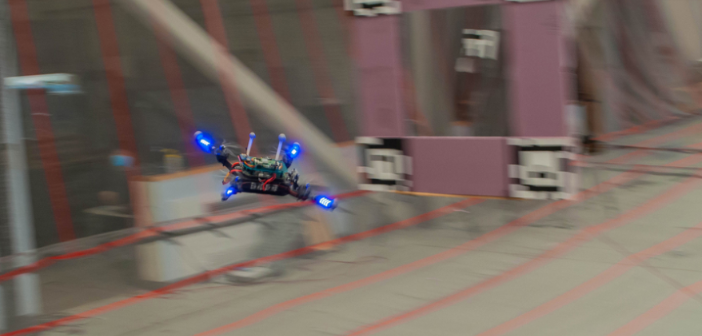Aerospace engineers at Massachusetts Institute of Technology (MIT) have developed a system to train drones to manoeuvre around obstacles at high speeds.
The new algorithm has been designed to enable fast, nimble drones for time-critical operations, such as search and rescue.
According to the MIT researchers, the faster drones fly the more unstable they become, and at high speeds their aerodynamics can be too complicated to predict. The engineers therefore devised an algorithm that helps drones find the fastest route around obstacles without crashing.
The new algorithm combines simulations of a drone flying through a virtual obstacle course with data from experiments of a real drone flying through the same course in a physical space.
Researchers found that a drone trained with the algorithm flew through a simple obstacle course up to 20% than a drone trained on conventional planning algorithms. However, the new algorithm didn’t always keep a drone ahead of its competitor throughout the course. In some cases, it chose to slow a drone down to handle a tricky curve, or save its energy in order to speed up and ultimately overtake its rival.
“At high speeds, there are intricate aerodynamics that are hard to simulate, so we use experiments in the real world to fill in those black holes to find, for instance, that it might be better to slow down first to be faster later,” says Ezra Tal, a graduate student in MIT’s department of aeronautics and astronautics.
“It’s this holistic approach we use to see how we can make a trajectory overall as fast as possible.”
The researchers started with a physics-based flight planning model, which they developed to first simulate how a drone is likely to behave while flying through a virtual obstacle course. They simulated thousands of racing scenarios, each with a different flight path and speed pattern.
They then charted whether each scenario was feasible, or infeasible i.e resulting in a crash. From this chart, they could quickly zero in on a handful of the most promising scenarios, or racing trajectories, to try out in the lab.
“We can do this low-fidelity simulation cheaply and quickly, to see interesting trajectories that could be both fast and feasible. Then we fly these trajectories in experiments to see which are actually feasible in the real world,” Tal added.
“Ultimately we converge to the optimal trajectory that gives us the lowest feasible time.”
The team’s results have been published in the International Journal of Robotics Research. The researchers now plan to fly more experiments, at faster speeds, and through more complex environments, to further improve their algorithm.
This research was supported, in part, by the U.S. Office of Naval Research.








